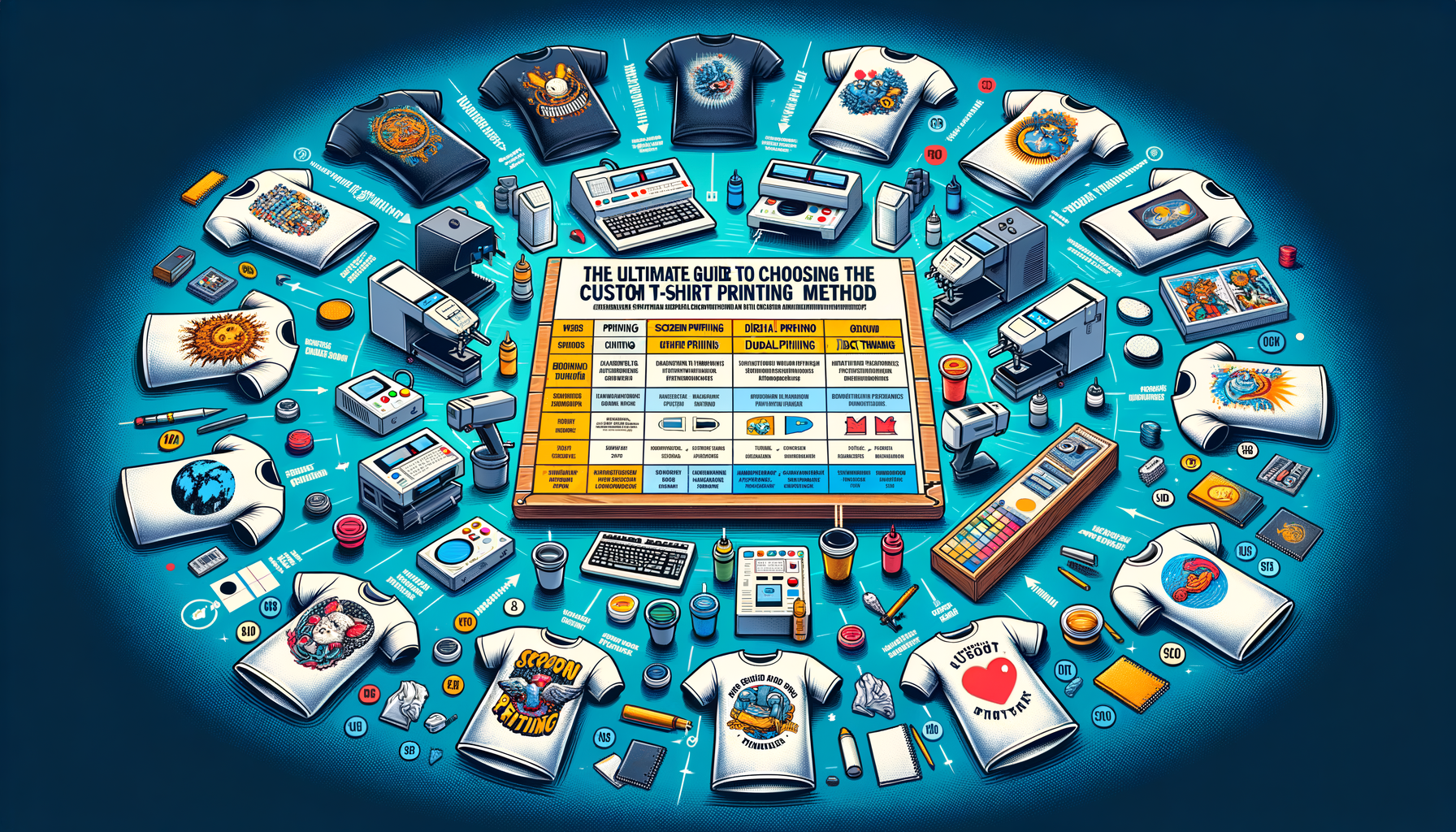
Custom T-shirts are more than just apparel; they are a versatile medium for self-expression, branding, and personal style. Whether you are designing shirts for a corporate event, a marketing campaign, or personal use, selecting the right printing method is crucial to achieving a high-quality product that meets your expectations. With a variety of printing methods to choose from, it can be overwhelming for beginners to decide which one is the best fit. In this guide, we will walk you through the most popular printing techniques, their advantages and disadvantages, and key factors to consider for your specific needs. By the end, you’ll have all the information you need to make an informed decision for your next custom T-shirt project. Below is an overview of the most common custom T-shirt printing techniques. Each method has its pros and cons, so understanding their differences is essential to making the right choice. Screen printing is one of the oldest and most popular methods for custom T-shirt printing. This technique involves creating a stencil (or screen) for each color used in your design. The ink is applied through the screen directly onto the fabric. Direct-to-Garment printing uses a specialized inkjet printer to apply ink directly onto the fabric. This method allows for high-quality, full-color designs with photo-like detail. Heat transfer printing involves transferring a design onto fabric using heat and pressure. This method can be done using vinyl transfers, sublimation, or heat transfer paper. Dye sublimation is a heat transfer process that uses special inks and paper. The design is infused into the fabric, creating a smooth and vibrant print. Vinyl cutting involves cutting designs out of colored vinyl sheets and heat-pressing them onto the fabric. This method is great for simple, bold designs. Now that you’re familiar with the popular T-shirt printing methods, here are some key factors you should consider when making your decision: If you’re printing a large number of T-shirts, screen printing is usually the most cost-effective option due to its efficiency and durability. On the other hand, for small orders or one-off designs, DTG or heat transfer printing may be more suitable. Intricate designs with gradients and multiple colors are best suited for DTG printing. Meanwhile, simpler designs with fewer colors may work well with screen printing, vinyl cutting, or heat transfer methods. Some printing methods work better on certain fabrics. For example, dye sublimation requires polyester fabric, while DTG printing is most effective on cotton-based materials. Always check the compatibility of your chosen method with the fabric you plan to use. Consider the longevity of the print. Screen printing and dye sublimation are generally the most durable options, while heat transfer prints may fade or crack over time with frequent washing. Your budget plays a significant role in determining the best method. Screen printing may be cost-effective for bulk orders, but other methods like heat transfer and DTG offer more affordable options for small orders. If you need your custom T-shirts quickly, DTG and heat transfer methods are typically faster than screen printing, which involves more setup time. Choosing the right custom T-shirt printing method is a crucial step in ensuring that your final product meets your expectations in terms of quality, cost, and durability. By weighing the pros and cons of each technique and considering factors such as order size, design complexity, and fabric type, you can make an informed decision that best suits your needs. Whether you’re planning a big event, launching a clothing line, or making custom T-shirts for personal use, the right printing method will bring your vision to life. Take the time to evaluate your options, and don’t hesitate to consult with a professional printing service for additional guidance. With the right approach, you’ll create custom T-shirts that are both stylish and memorable.The Ultimate Guide to Choosing the Right Custom T-Shirt Printing Method
Understanding the Different Custom T-Shirt Printing Methods
1. Screen Printing
2. Direct-to-Garment (DTG) Printing
3. Heat Transfer Printing
4. Dye Sublimation
5. Vinyl Cutting
Factors to Consider When Choosing a Printing Method
1. Order Size
2. Design Complexity
3. Fabric Type
4. Durability
5. Budget
6. Turnaround Time
Final Thoughts
```
